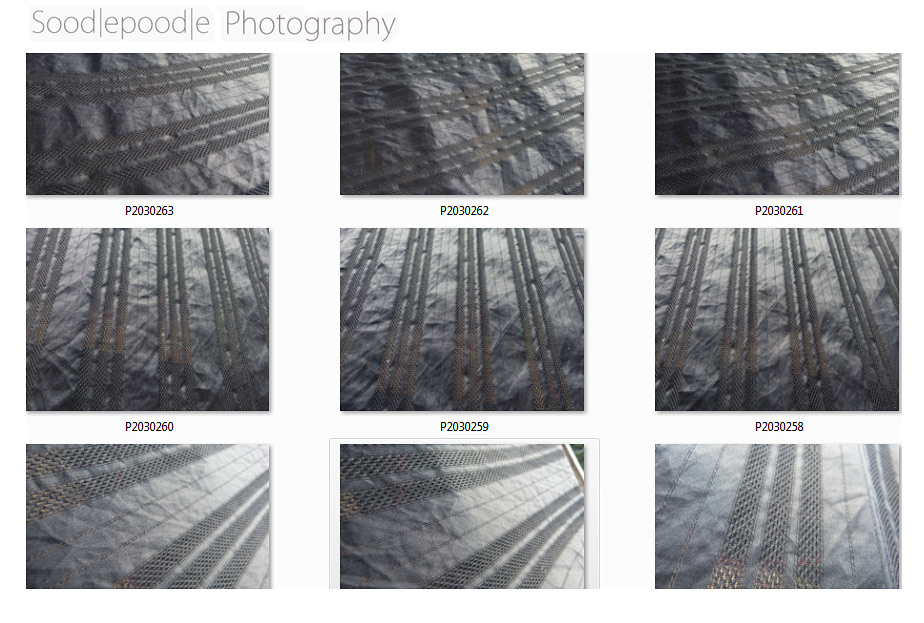Verhindern Sie das Verlassen von Rohstoffen aus Ihrem Zugriff! hab ich grad als Überschriftenentwurf im BackEnd meines Blogs wiedermalgelesen™. Zwei Jahre alt ist diese Idee, man liest am Rande des Dashboards: 2023/03/26 at 12:39 pm. Und endlich gibts die Story dazu:
Sie sind innen golden, meine Senf-Majo-T-MArk-REmoulade-Tuben, die ich seit Jahren so vergenußwurstelé. Hätte ich nicht gedacht, eher silbern. Aber HEUTE, nachdem ich an ihre Konsistenz per erstmals-Aufdruck-Lesen als aus Aluminiumtube “erinnert” wurde, habe ich aus Neugier erstmals die leer gegessene letzte™
- nudelholzgewalzt,
- aufgeschnitten,
- auseinander geschert,
- aufgeklappt,
- und saubergespült

Und bin erstaunt über die Dicke des Materials. Die fällt beim Tubenleeren per Faustdruck gar nicht auf, aber jetzt komm ich mir vor wie in einer Metallerwerkstatt: plötzlich riecht man die “Gefahr”, von den leider ausgerissenen Kanten verletzt werden zu können.
Und was soll das alles? Nun, ich mach mir hier ein kleines Erinnerungsmonument
Monumental erinnert werden will ich daran, was als klassischer Konsument so auch durch den kleinen soodlepoodligen Haushalt “läuft”. Konsument heißt wörtlich eigentlich Verbraucher. Und anschließend von Verbraucher zu Aufbraucher zu “Vernichter” zu folgern ist ‘2025 mittlerweile absolut non grata, Restmülldeponietatsachen hin oder her. Und fast alles davon passiert in der erdgeschichtlich winzigen Spanne zwischen Herausnahme aus dem Supermarktregal bis zum Droppen in den Waste.
Ein sehr oft sehr erschreckend kurze Zeitspanne. Bei Lebensmittelverpackung natürlich am kürzesten. Eine Zeitspanne, in der ich Rohstoffe, Rohstoffe! (Rohstoffe der Zukunft, Rohstoffe für den Bau der Zukunft) einfach von null auf hundert rückwärts “verwandele”. Zunichten mache. Gegen die Wand fahre.* Gedankenlos! Was? ist das Schlimmere dran.
Aber ich will das hiermit heute ändern. Drum benagle ich mit den künftig zu leerenden, plättenden, aufzuschneidenden und aufzuklappenden Tuben ein exemplarisches (Möbel)monument. Vielleicht so ne kleine alte, unansehnlich gewordene Truhe, Nähmaschine oder Kommode wie diese schnelle kleine Skizze auf einem ebenfalls wiedergefundenen Pappkarton zeigt.
Wird so seeräubermäßig wirken wahrscheinlich die Nagelei.. ich mach mal mit Photoshop ein Moodboardchen aus dem RawFoto siehe oben:

Ne, doch nicht piratisch, eher häuslebauer-ordentlich geschindelt. Geschindelt in Gold. Wow. Sieht gar nicht (mehr) nach Abfall aus! Und wenn ich mir nun statt dessen ausgeschnittenes Fischflossiges oder Federspitzes vorstelle…
WEll, dafür lohnt sich el Aufwand!
N’ schnelles DigiTutorial dazu? Voilá:
einen SchindelformUmriß aufziehen: Rechteck plus anschließende Ellipse. Das als Kachelmuster mit Abstand definieren. Mit diesem 8er-“Ausstecher” an drei verschiedenen Stellen Proben der goldenen Alufläche nehmen, diese dann spiegeln und verdrehen um 180°, um Abwechslung im Endergebnis zu erzeugen. Dann alle mit nem tiny Schatten versehen. Aufeinanderschieben. Dachdecken. Voilá again.

Der wiedergefundene ErstWortEntwurf ging so:
Also das mit diesem geringschätzigen, erstaunt tuenden Blick, das muß aufhören! Den nämlich ernte ich fast immer, wenns um das “Abfangen” von anderswo als Müll getaggten Rohstoffen aus dem Haus geht.
Grad mit dieser großzelligen Blisterfolie habe ich Verlockende Ergebnisse™ erzielt.
[ich suche grad das betreffende Foto. Das da wars NICHT. Platzhalterjob!]

* Auch wenn man die Dinger brav unausgespült in der “Wertstofftonne” entsorgt, benötigt die Welt weitere deutliche Resourcen, um daraus wieder eine flotte Tube zu gewinnen, auch wenn diese “nur” ein Bruchteil der ursprünglichen betragen….. Nicht in den Recycling-Kreislauf rückgeführt, ist das gar noch prekärer.
REcherchet das mal!
Also mein Favorit so far wäre https://metallfakten.de/wie-entsorgt-man-aluminium/
PS.: Lustig am ersten Foto das “grüne Blatt”, das von diesem “Baum”, von dieser Idee grad auswächst 😉
Nachtrag am Danachtag: An diesem frühen Dienstagmorgen frage ich mich dann zum zweiten Mal, warum ich solche Aktionen-der-Zeitverschwedung ™ denn durchführe. AberÜberNacht kam die Antwort angeflogen:
Nix Unsinn, denn mal wieder wahrscheinlich unbewußt ist dieses plötzliche Aufschneiden ganz klar Reaktion auf meine jüngste Entdeckung des
Wir-bringen-Euch-mit-Müll-zum-Staunen-Park
Den gibts als “Waste To Wonder Park” in New Dehli/Indien: die ähem neusten* sieben Weltwunder aus..ta-dah! Abfall – (about 90 tonne of industrial and other kinds of waste) .
Beim Bilder Browsen im W W W gefallen mir am schnellsten und besten (wie immer nix Neues) die Baustellen!bilder der im Werden begriffenen Weltwunder auf indianexpress.com
*Man liest dazu:
The seven wonders are – Great Pyramid of Giza (Egypt), Eiffel Tower (Paris), Leaning Tower of Pisa (Italy), Statue of Liberty (the US), Christ the Redeemer (Brazil), Colossuem (Italy) and Taj Mahal (India).
Na dann, Ihr wunderfitzigen Touristen der Zukunft, sprechet es laut: « I’m looking for dostoprimechatel’nosti » . Und dann ducket/googelt das und dann springt auf wikipedia.org/wiki/Schibboleth s.m.i.l.e.y.
PS.II: Falls Ihr Euch wundert: doch, doch, das heute hängt ALLES zusammen. Stringentestens sogarstens! – ich bin “nur” chronologisch von Assoziationspunkt zu Assoziationspunkt “gereist”: Tubenausrollen first, Abfall retten, Indien, Sehenswürdigkeiten, Aussprache-zeigt-Herkunft-Phänomen.








